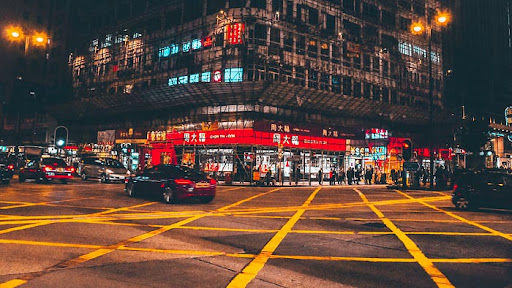How Software Experience Design Can Make Our Cities Better
- Kyle Gulau
- Oct 23, 2023
- 3 min read
Updated: Nov 14, 2023
Aesthetic usability and Jakob's law applied to our lived world

https://miro.medium.com/v2/resize:fit:720/0*jaOrIukgihPObFAr
I have some professional experience in product management and software development. As I continue to explore how to improve user experience and learn from my colleagues, I started to recognize some patterns.
Two concepts stood out to me that can be translated from our digital world to our lived world.
If It Looks Good You Think It’s Better
What is the aesthetic usability effect?
According to Nielsen Norman Group, “aesthetic usability refers to a users’ tendency to perceive attractive products as more usable. People tend to believe that things that look better will work better.”
According to the site, Laws of UX, “Users often perceive aesthetically pleasing design as design that’s more usable.”
The aesthetic usability effect came to life in 1995 when two researched at Hitachi observed users interacting with the different visual layouts on ATMs. Masaaki Kurosu and Kaori Kashimura concluded, “the apparent usability is less correlated with the inherent usability compared to the apparent beauty.”
Put another way if you like how it looks, you’re more likely to tolerate minor usability issues.
Applied in our neighborhoods
The easiest place to consider this being applied to our neighborhoods is on our streetscapes. If we perceive our streetscapes as aesthetically pleasing we’re more likely to look past minor issues.
Consider the old quaint neighborhoods. They aren’t perfect but because they have a level of aesthetic pleasure we look past the imperfections. If the roads are too small, not enough parking, too many leaves from the trees, curb height inconsistency, etc.

It’s not perfect but it looks nice. Image Credit: Author
If the neighborhood is perceived as less attractive those problems accumulate, resulting in complaints and actions to address them. In some strange paradox addressing all those issues will likely make the neighborhood even less attractive.
You Like Things That Work Like Other Things
What is Jakob’s Law?
The site Laws of UX defines Jakob’s law as, “Users spend most of their time on other sites. This means that users prefer your site to work the same way as all the other sites they already know.”
Oreilly shares the origin of Jakob’s Law, “Put forth in 2000 by usability expert Jakob Nielsen, who described the tendency for users to develop an expectation of design conventions based on their cumulative experience from other websites.”
Basically, we don’t want to have to think extra. We want the online check-out process to be the same for Amazon and Walmart. We get frustrated when a small business website has a different process that we have to figure out. This is part of why Shopify is so awesome.
Applied to our buildings
There’s an easy answer to start with. This is why we have code and standards. Imagine if some doors had hinges on the top as opposed to the sides?
This is also why we feel stupid when we “push” on a “pull” door. We would prefer our experience with doors to be the same.
That may be a bad analogy, I realize that standardizing all doors is impractical and impossible. But over time we have collectively come closer to center on what a door is. There’s plenty of other examples of where standardization has made it easier for manufacturing, building, and living.
Do people spend more time in other cities?
If we replace “sites” with “cities” in the definition of Jakob’s law and say, “People spend most of their time in other cities. This means people prefer your city to work the same way as the ones they already know.”
How might that impact our perspective on development? Does it? Is this what is leading to our global urban monotony? Our application of this principle to our buildings?
I think the argument should be made that we spend more time in our own city than others. How does that impact our perspective?
So that’s why it’s weird when we travel?
When you’re in a new place — It’s exhausting. The sensory overload of every new detail to consume. Planes, trains, and automobiles, all with schedules in different formats and languages.
Traveling from the U.S abroad, especially for the first time, can be eye-opening.
If you’re used to “American Intersections” and then you’re presented with the image below? Yeah, I can see you saying, “I wish every city was like the city I spend the most time in.”

If that’s your perspective you might be missing the point. Websites are built, primarily, to get attention and make money. To do that best, people seek to create frictionless experiences.
For The People
Cities should be built for the people who spend the most time in them.
I started this article convinced that both user experience principles would translate to the real world. It’s clear that only one does.
If a neighborhood looks nice, we’re willing to have patience with its imperfections. The other, Jakob’s law, leads to a great discussion about why urban diversity is so important.





Comments